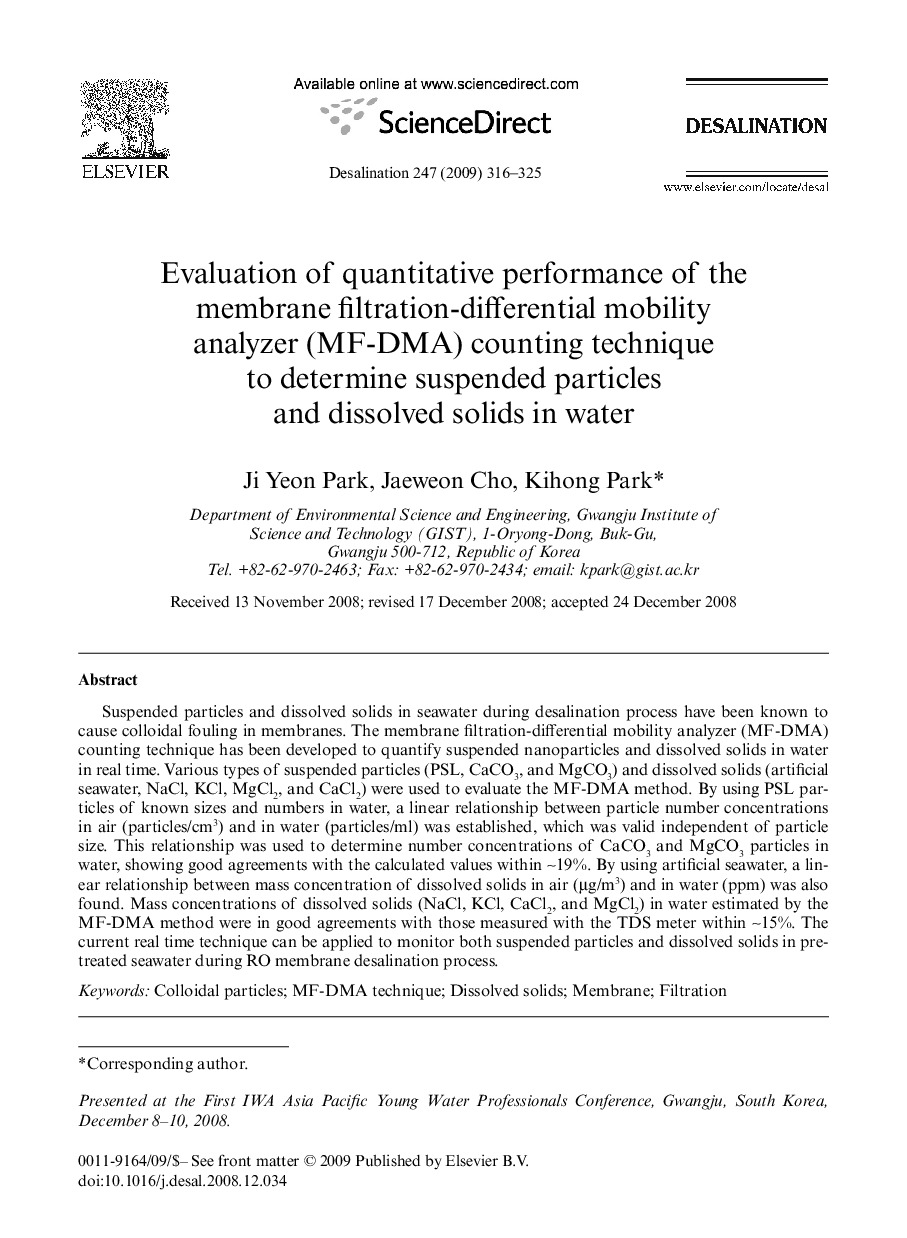| Article ID | Journal | Published Year | Pages | File Type |
|---|---|---|---|---|
| 626543 | Desalination | 2009 | 10 Pages |
Suspended particles and dissolved solids in seawater during desalination process have been known to cause colloidal fouling in membranes. The membrane filtration-differential mobility analyzer (MF-DMA) counting technique has been developed to quantify suspended nanoparticles and dissolved solids in water in real time. Various types of suspended particles (PSL, CaCO3, and MgCO3) and dissolved solids (artificial seawater, NaCl, KCl, MgCl2, and CaCl2) were used to evaluate the MF-DMA method. By using PSL particles of known sizes and numbers in water, a linear relationship between particle number concentrations in air (particles/cm3) and in water (particles/ml) was established, which was valid independent of particle size. This relationship was used to determine number concentrations of CaCO3 and MgCO3 particles in water, showing good agreements with the calculated values within ∼19%. By using artificial seawater, a linear relationship between mass concentration of dissolved solids in air (μg/m3) and in water (ppm) was also found. Mass concentrations of dissolved solids (NaCl, KCl, CaCl2, and MgCl2) in water estimated by the MF-DMA method were in good agreements with those measured with the TDS meter within ∼15%. The current real time technique can be applied to monitor both suspended particles and dissolved solids in pretreated seawater during RO membrane desalination process.
